Ilford’s HP5+ is one of the industry standards for black and white film – an inexpensive 400 ASA emulsion available almost everywhere and used by almost everyone at some point in their film-shooting career. It’s recommended regularly for beginner film photographers, professionals looking for versatility, as a go-to for all sorts of lighting conditions, or for the great balance of speed and grain.
However, when it comes to what speed to shoot it at, heated discussions regularly develop on forums, YouTube or Twitter – do you shoot it at box speed, as the manufacturer intended? Pull it down to 100 or 200 ASA to take advantage of the exposure latitude and control grain? Push a stop for a boost in contrast and flexibility in changing light?
Personally, I usually lean towards shooting it at box speed or with a one stop push – I like the flexibility and tend to lean towards higher contrast anyway. Recently, however, a particular combination of circumstances led me to try pushing to higher and higher ASA values – with results that surprised me with their clarity and range of tones. (Note – I tend to use the term ASA, largely out of habit, when referring to film speed – often referred to as ISO. The terms are interchangeable in any practical sense, but ASA has the advantage of making the article title here alliterative.)
In late March 2021, a number of protests, termed #killthebill, took place around the UK in opposition to the government’s proposed Police and Crime Bill. Without turning a photography article into a political piece, suffice it to say as someone whose political interests predate their photography, I found myself on a train to Manchester, grabbing a camera and some film almost as an afterthought – my Rollei 35B is small enough to fit in a pocket, and cheap enough to not stress too much if it met the wrong end of a baton or the hard ground.
For film, I had recently bought a bulk roll of HP5+, and some 36-shot rolls were easy to hand. While loading the camera on the train, I regretted briefly bringing the Rollei and not an autofocus program point-and-shoot – protests can be fast moving, messy affairs, and it was a grey, overcast afternoon with the light fading fast. I wouldn’t likely have time to stop, compose, estimate distance, adjust zone focusing (with likely narrow focusing bands due to the low light and fast motion needing wide apertures), check the Rollei’s unreliable selenium light-meter and expose properly.
On a bright, sunny day, I’ve shot the Rollei with sunny 16, using f/16 or f/11 and my lens at its hyperfocal point, to take the focus out of the equation – but even with a push to 800, I wouldn’t get a desirable mix of narrow aperture and speed for the conditions. Well – going back to first principles of exposure – if your aperture and shutter speed are set, what can you change? Film speed! A quick bit of back of the envelope maths, and I figured that 1/250s, f/11 and an ASA of 6400 should give the balance I was looking for – now if I’d worked this out at home, I’d have thrown in a roll of Delta 3200 or T-Max 3200, but I only had HP5+ in my pocket – such began my adventures in high ASAs!
Home from the protest, a little bruised but with a full roll of shots – now my attention turned to development. What would be best for this 4-stop push? My usual Bellini Hydrofen had no times for that level of development, and with this being a quite contrast-y developer I feared the shots turning into lithograph-like levels of blocky blacks and highlights. Luckily, I had recently picked up some Ilford Microphen in a sale, and was looking for an excuse to use it – and I wasn’t the first to try this kind of push, the Massive Dev Chart had times for HP5+ at 6400! Microphen is a speed-enhancing developer, almost made for pushing film, and used at stock dilution would give the results I was looking for.
Developer mixed up, a nice hot Sunday afternoon helping the development go a little quicker, and the film was out the tank, dried and scanned – and I was very pleased with the results! Lots of contrast, yes, and a fair bit of grain, but for shots taken handheld, with little consideration for fine exposure or focusing, they were far better than I expected. The negatives were clear, and only minimal tweaking in Lightroom was needed to get scans I was happy with. I can’t say how well they’d print in a darkroom, but I think the negatives were still dense enough to be usable.
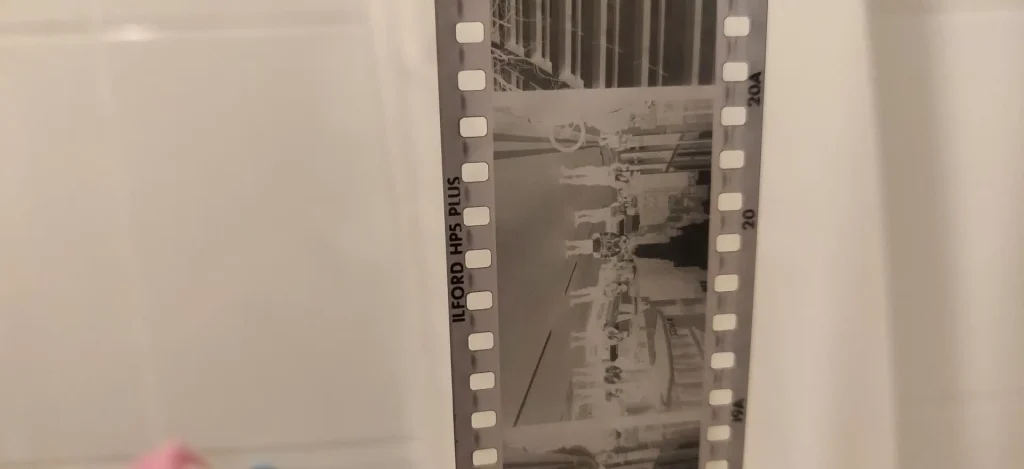
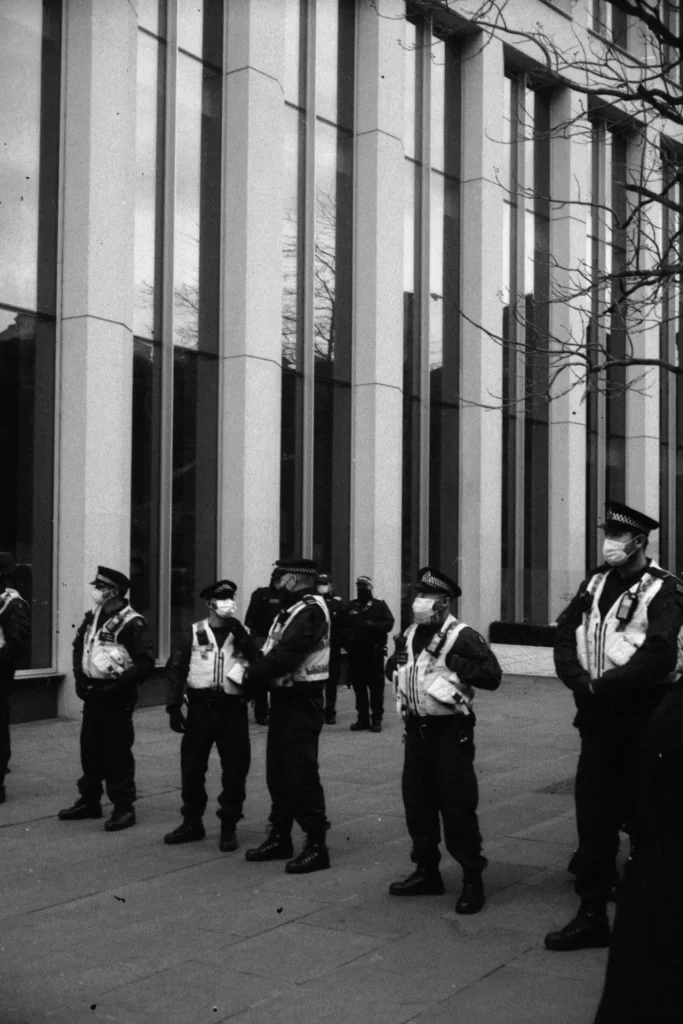
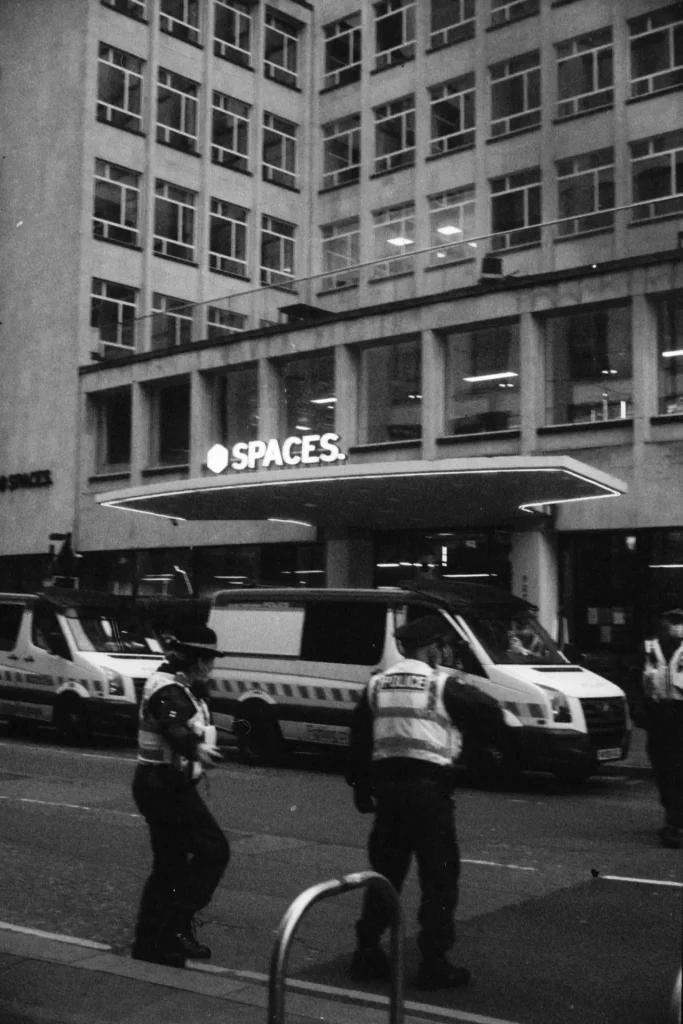
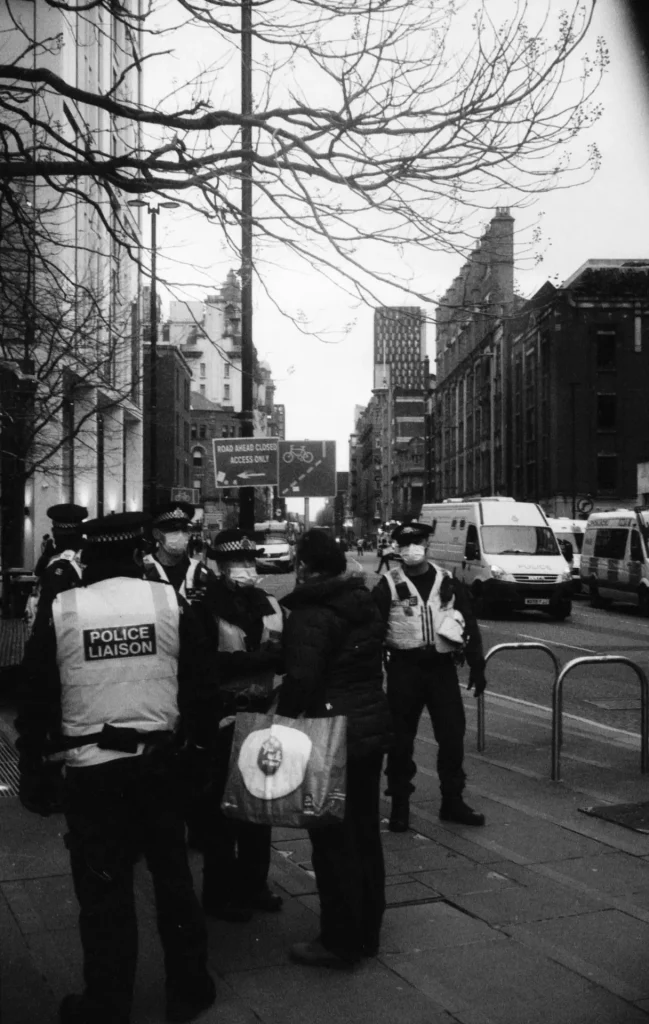
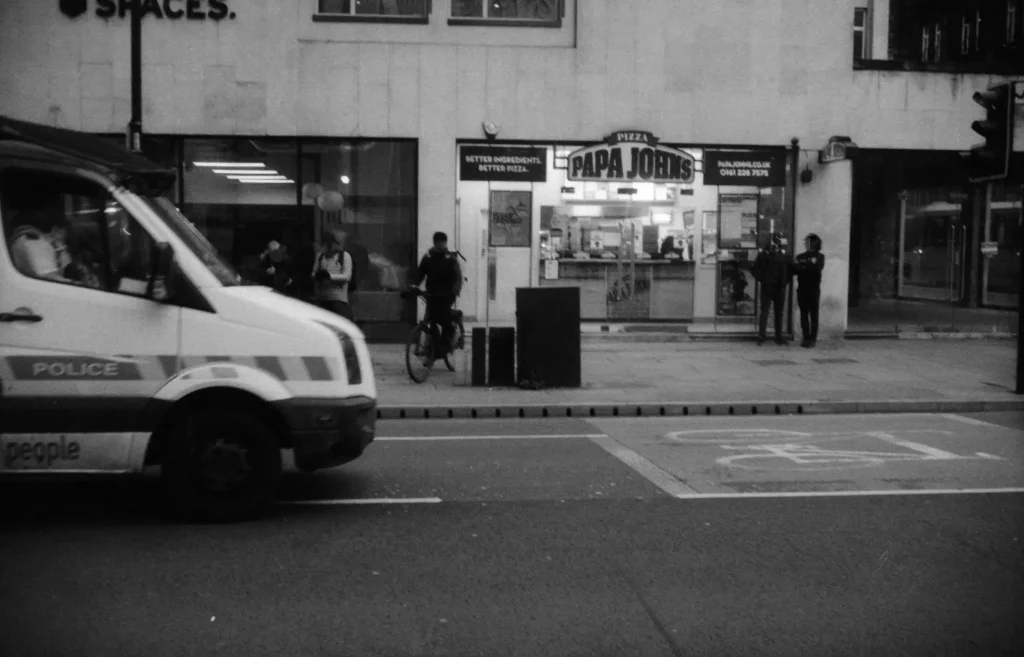
With this under my belt, when the next weekend came around, I was heading into the centre of Liverpool as the light completely faded into night for some slightly more peaceful shots. I’d been shooting some slide film at golden hour near the river, and had some high-speed colour film I wanted to test out with the city lights. Remembering the results of the pushed HP5+, I stuck another roll in the Kiev 4 rangefinder I had with me – deciding to push things even further (up to 12800 ASA) as I had a proper light meter with me and was shooting completely at night. My Gossen Lunasix Pro will happily meter up to 100,000 ASA (maybe next time!), and the recently-cleaned rangefinder patch in the Kiev was fairly straightforward to focus on any highlights in the shots.
For these shots, I wanted to control the contrast a bit more in the tank – I did a bit of research since the previous development and found people recommending reducing agitation in the last half of development. I also had to figure out times – some guesswork and more back of the envelope maths required, but I settled on a 27-minute development, around 30% more time than I used for 6400ASA. I inverted the tank for the first 30 seconds, then for my usual 5 times every 30 seconds for the first 5 minutes, 5 times every minute for the next 5 minutes, twice every minute for the next five, and then once a minute until the end of development. These finished negatives scanned beautifully, and I was blown away by the tonal range, even at such a push.
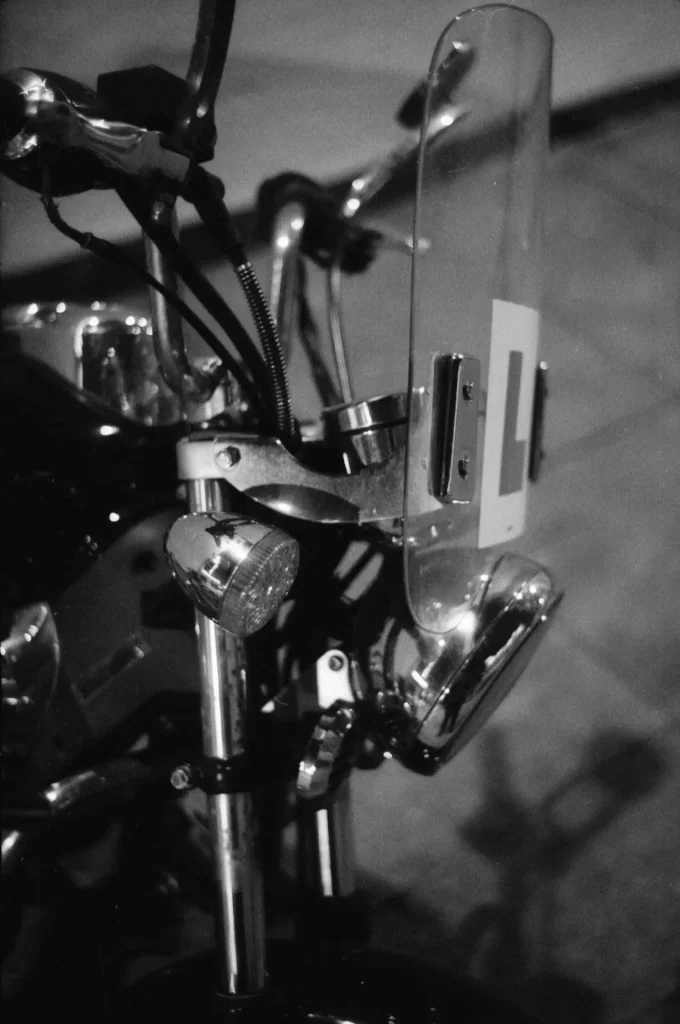
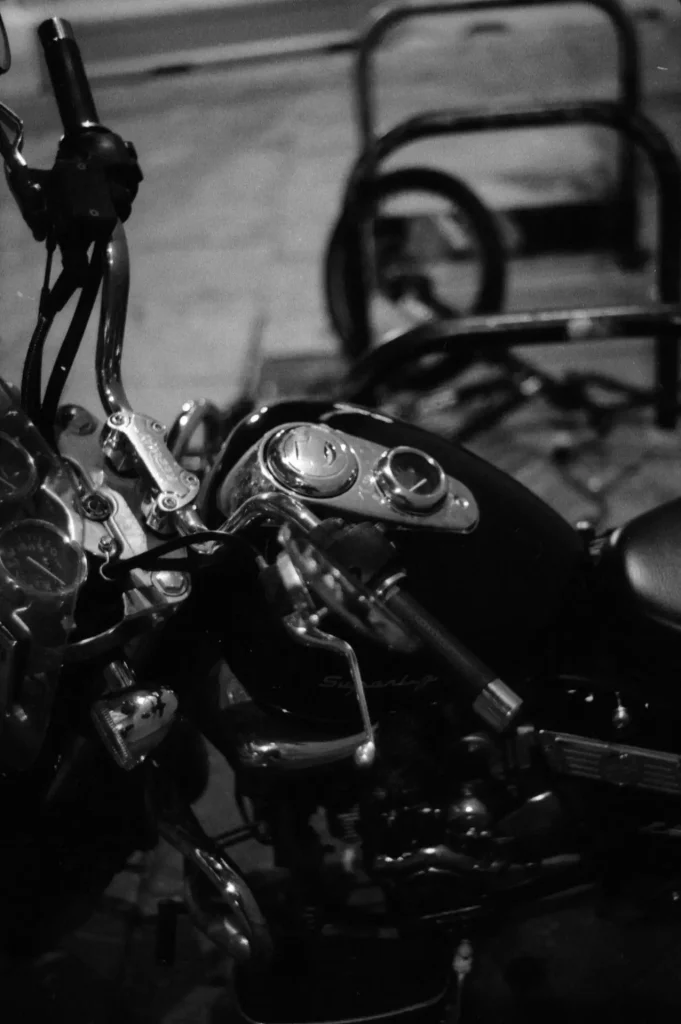
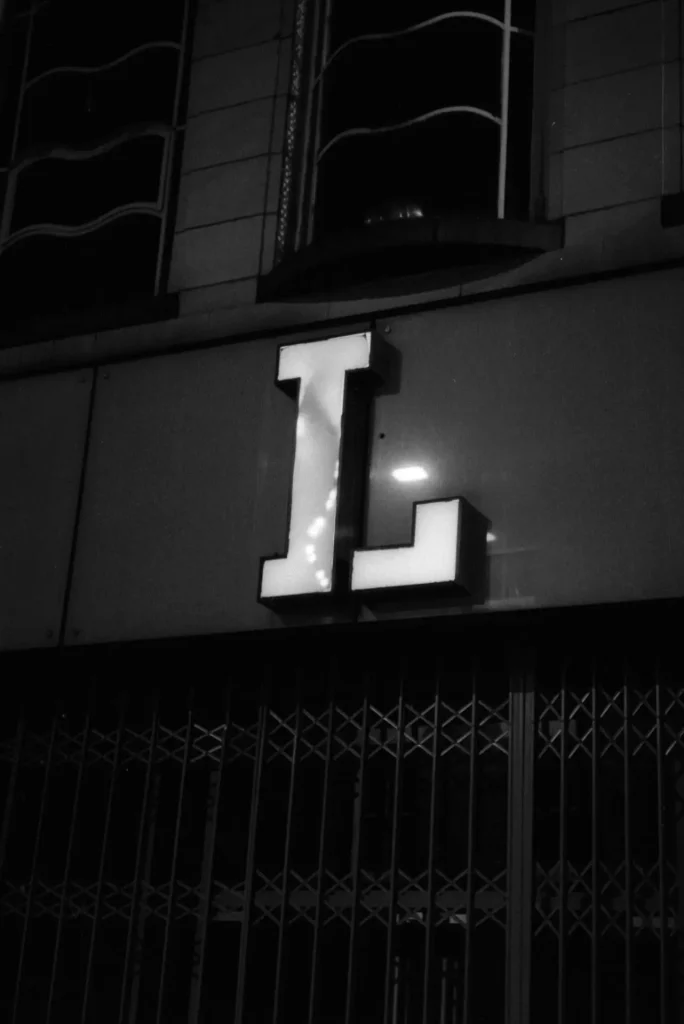
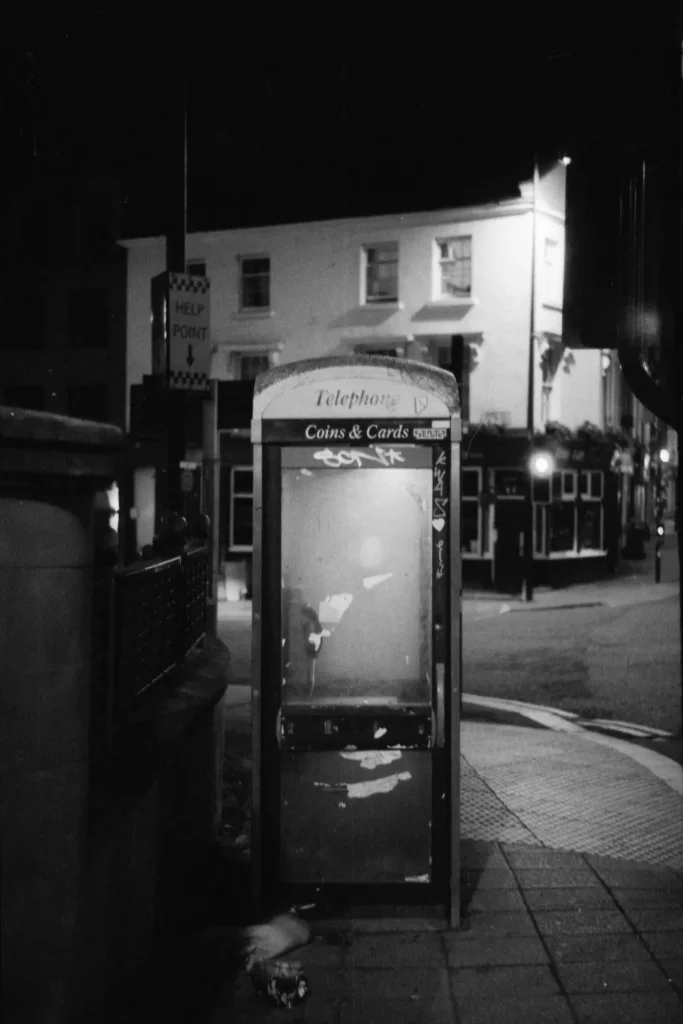
So, what are the pros and cons of pushing HP5+ this far? Well, there’s a fair bit of grain, but HP5+ is never the smoothest film anyway, and the structure is pretty good, adding a nice grittiness to the shots. Deep shadows get pretty crushed, but what else can you expect shooting at night? Honestly, being able to take a camera out in the evening or at night and either set-and-forget exposure, or use it the same way you would on a sunny day, with a wide range of shutter speeds and apertures available, is a fantastic experience.
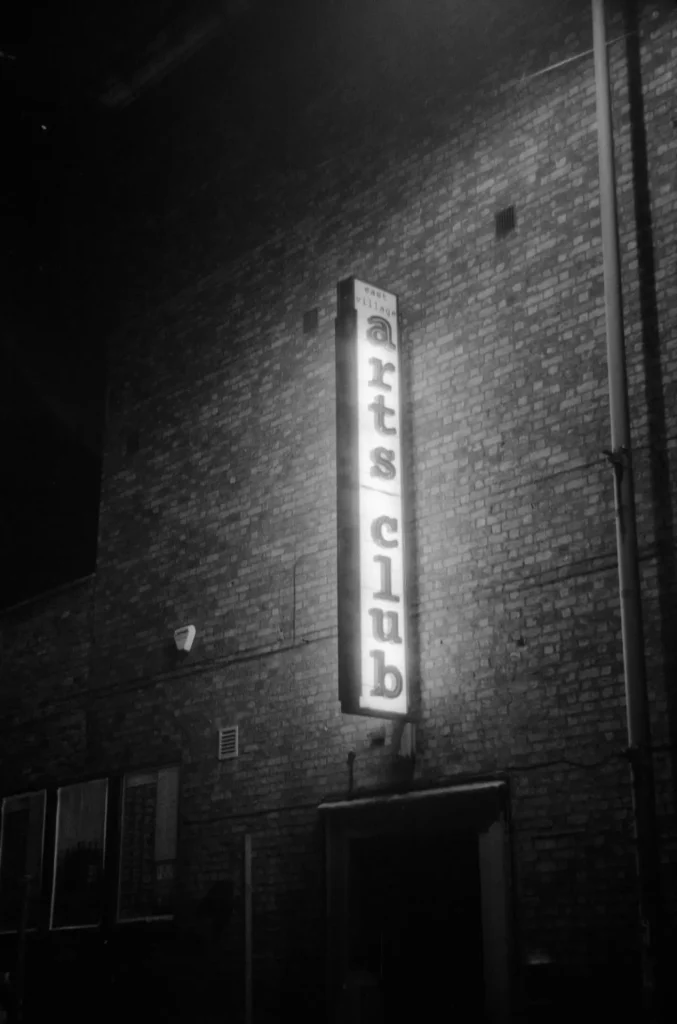
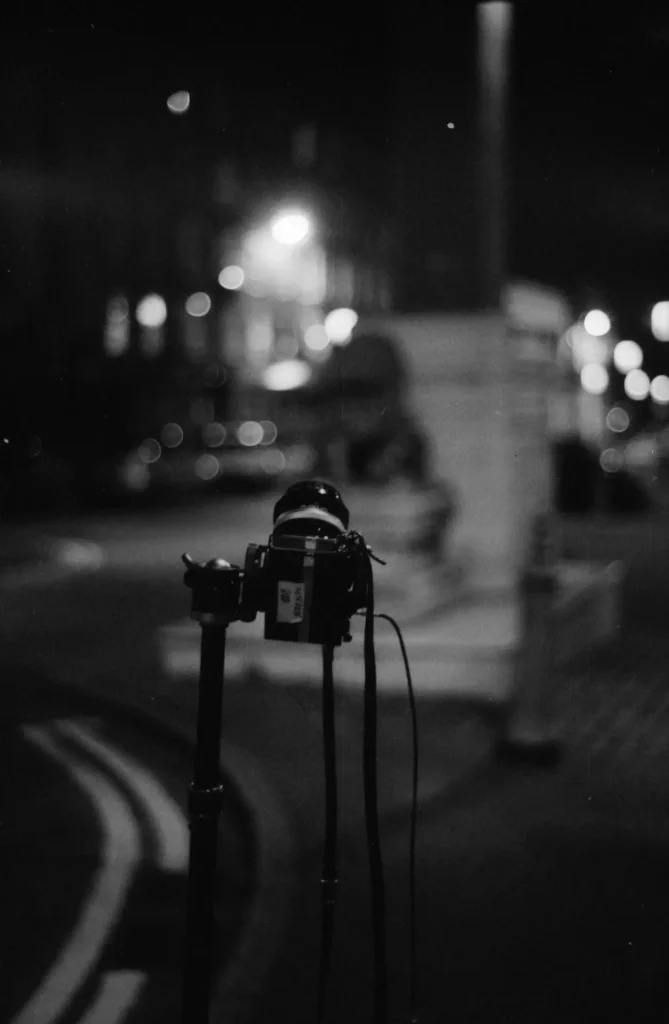
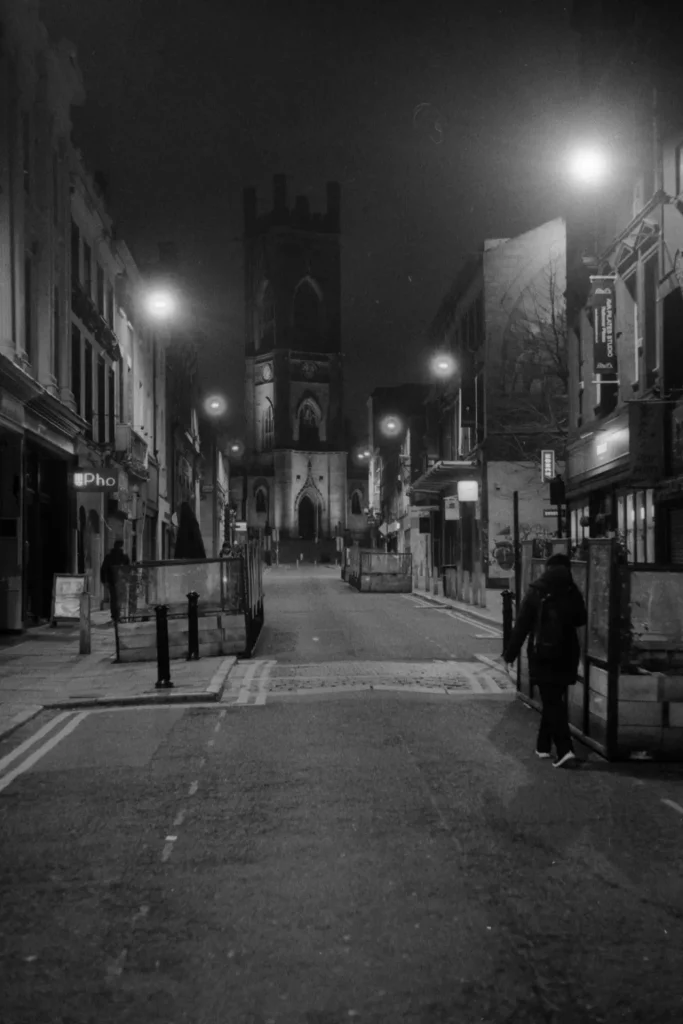
Development becomes long, a little tedious, and potentially expensive, stock Microphen can be reused, but will degrade fairly quickly, and with such long development times can be nearly exhausted within a few rolls, but that’s the only real downside I’ve found. I’ve had Rollei RPX 400 recommended to me as another versatile film for pushing, and it’s one of my favourites at box speed, so that might be the next challenge, or perhaps going for broke (and the limits of my light meter) with another stop or two! To anyone else tempted to try this, I say go for it! Box speed is only a suggestion!
Thanks for reading! I hope this inspires some people to experiment with strange pushes as well! For anyone interested in seeing more of my shots, I post on Twitter at @kinew92.
Share this post:
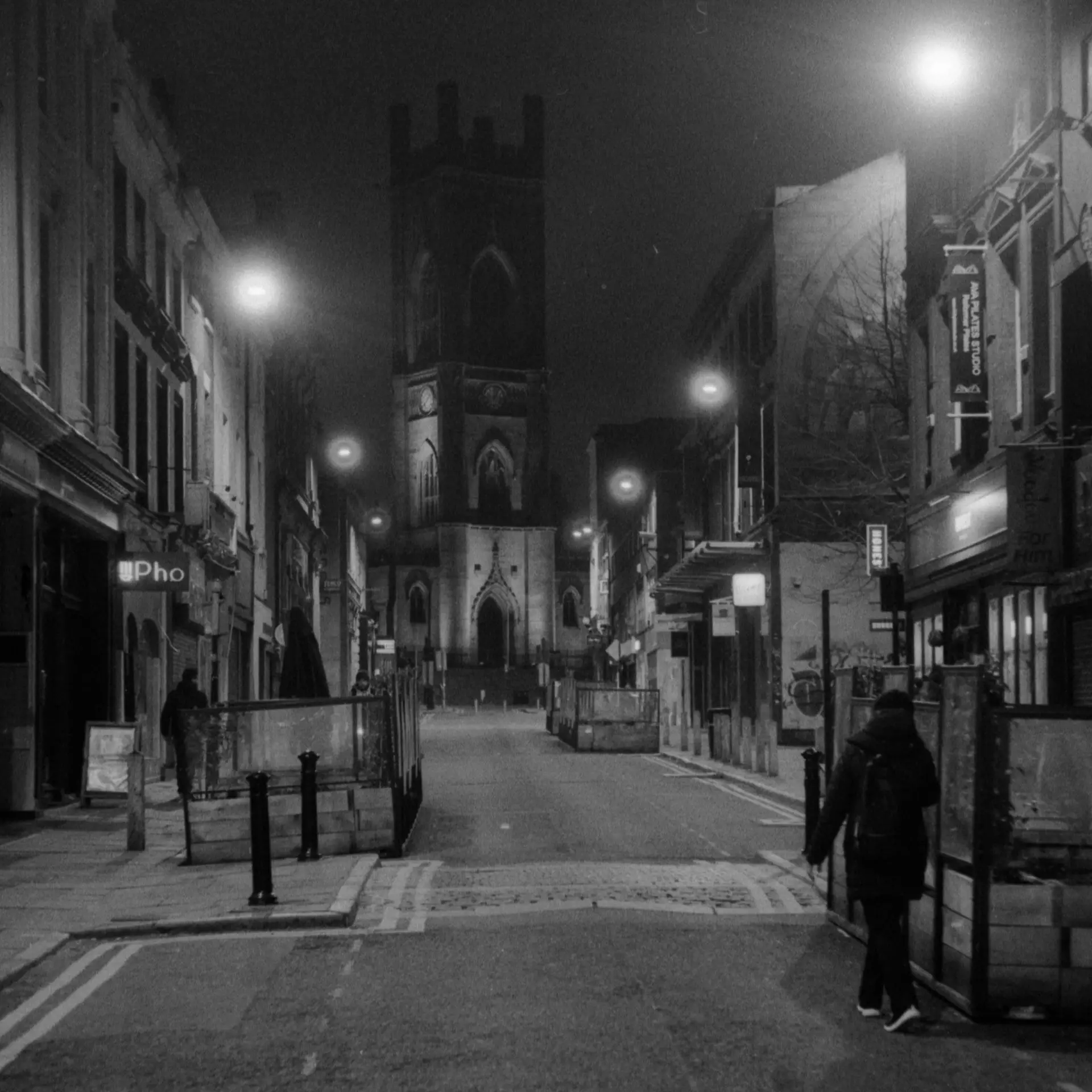








Comments
Peter Roberts on Ilford HP5+ at Adventurous ASAs – By Kieran Newman
Comment posted: 23/07/2021
I remember pushing HP4 to 6400 ASA to photograph the local rock band way back in the seventies with wonderfully grainy, contrasty results. Unfortunately all my negatives of that period got lost in a flood we had twenty years ago. There again, they never became rock stars and I never became a famous photographer. That's life I suppose!
You've spurred me on to giving it another go with HP5. In fact I've already researched development times!!
Comment posted: 23/07/2021
Tobias Eriksson on Ilford HP5+ at Adventurous ASAs – By Kieran Newman
Comment posted: 23/07/2021
Thank you for sharing!
Comment posted: 23/07/2021